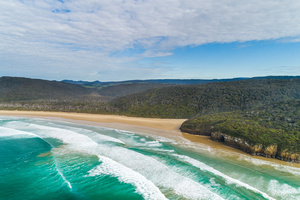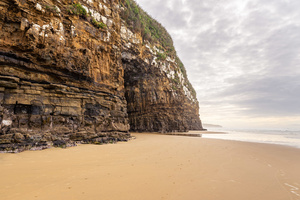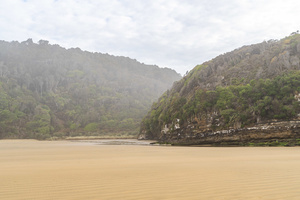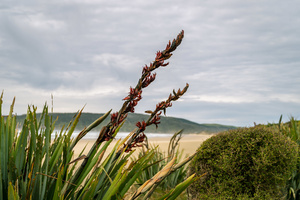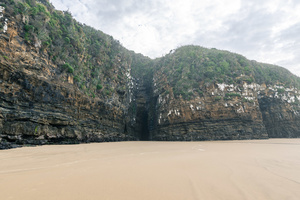History
Human History of Catlins and Cathedral Caves
The Catlins area was visited and settled within a few generations of the Polynesian discovery of Aotearoa/New Zealand. In the 14th and 15th centuries, people of the moa-hunter period frequented this coastline. Evidence of occupation of the Waipati Beach area is sparse compared to the rich archaeological sites at Papatowai and Pounawea to the north. Possibly this is because the Waipati area was wetter and less attractive for settlement.
The early people did at least pass through the Waipati area and left evidence at campsites. One site, not far from the Cathedral Caves car park, was investigated in the 1950s. It revealed a moa bone and a stone awl or borer. The presence of moa bone suggests occupation of the site before about 1500 AD. At this time, food resources would have included seals, penguins, forest birds, eels, bush moa and seafood/kaimoana such as blue cod/rāwaru, paua and cockles/tuaki. When the moa and seals became scarce through hunting, the people moved elsewhere.
The South Island Landless Natives Act
At the turn of the 20th century, the New Zealand Government decided to reserve land for descendants of Māori who had been adversely affected by Government and private land purchases in the 1840s and 1850s. The South Island Landless Natives Act (SILNA) 1906 was intended to provide redress for the economic hardship afflicting Māori who had lost their customary lands and the means to support themselves. Under the legislation, the Government (Crown) allocated 57,500 ha of land, much of it in southern South Island and Stewart Island, to about 4,000 Māori. At the time of their granting, these SILNA lands were among New Zealand’s least valuable – remote, rugged, wet, unsuitable for farming and often far from traditional home areas.
Tautuku Block X Section 3C Trust
A Māori land trust, Tautuku Block X Section 3C Trust, was set up in 1996 to manage the block and look after the interests of its 216 registered beneficial owners. The 443.3 ha block includes the Cathedral Caves, the bulk of Waipati Beach and the dunes, streams and coastal forest up to 2 km inland of the beach. This block is part of a wider area of Māori land (the Tautuku - Waikawa lands, 4,872 ha), which were set aside under the South Island Landless Natives Act 1906.
Maintaining Tautuku and Cathedral Caves for future generations
Safely managing the increasing numbers of people wanting to visit Cathedral Caves is the most important economic and environmental project in Block X Section 3C. Maintaining the unique wildlife and environment of the area, so that people can continue to enjoy this area in its pristine state, is incredibly important, and one thing that we are all responsible for helping to maintain. We can take on this responsibility by remembering to take only pictures and leave only footprints.

